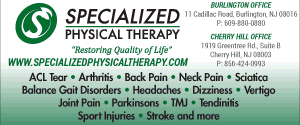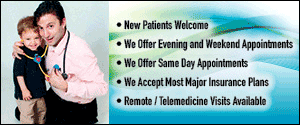
With COVID-19 dominating health news for the past two years, it’s been a struggle for some to maintain an active lifestyle or keep up with their regular, preventative exams, especially with fear of exposure influencing those decisions.
Doctors certainly understand why they haven’t seen some of their patients for a while. But they say that the two-year anniversary of the pandemic’s onset coupled with the advent of Heart Health Month is a good time to start reinstating the habits that lead to a healthier heart.
“The world kind of stood still for the last two years, but one of the positive messages is that patients are a little more interested now in being proactive with staying healthy,” says Dr. M. Scott Dawson, an Inspira Health cardiologist and a member provider of Cardiac Partners at Cooper and Inspira. “We want people to use their physicians as a resource for direction in their diet and lifestyles. We want people to get back to the activities they were doing before. As we’re rolling back some of the mandates of COVID, maybe we can roll out the carpet to welcome patients back to their cardiologists and primary care physicians to take a look at their health-care goals post-COVID.”
The area’s cardiac experts have plenty of advice to nudge you back toward proactively managing your cardiovascular health while emphasizing its impact on the state of your heart.
Return to Routine (Exams, That Is)
Now’s the time to get back on a regular check-up schedule, or look for a new primary care physician if you no longer have one. Those regular checkups not only help a doctor get to know you better, but also can help them track any changes in your health that might merit a deeper look, or recommend any appropriate screenings.
“The newest studies reiterate the importance of screening for different facets of heart conditions,” notes Dr. Anne Jones of Rowan Family Medicine. “That means making sure patients are up-to-date on things like their cholesterol levels, their fasting lipid panels and screening for diabetes. You’re looking for possible risk factors that might not be evident in their daily life, because things like high blood pressure—or hypertension, which is one particular risk factor for heart disease—is known as ‘the silent disease’ since many people don’t experience symptoms or they might not equate their symptoms to high blood pressure.”
Those with other medical, physical or neurological diagnoses should also be aware of how those conditions can impact their heart. Regular conversations with not only dedicated specialists but also primary care physicians can help individuals, as well as their caretakers, focus on the big picture.
“Individuals with autism and other developmental disabilities can also have factors that put them at increased risk of heart problems,” says Dr. Sarah West, a neuropsychologist at Bancroft NeuroRehab. “If they have food sensitivities, for example, they might be working with a specialized nutritionist to help that person eat a healthy diet even though they have some really restrictive food preferences.”
Seemingly Harmless Habits That Hurt
“Prevention of heart disease, and overall heart health, is associated with the things we do every day,” Jones points out. “Exercise, nutrition and food intake are important for heart health, but they’re also important for our holistic well-being and mental health. These are all choices patients can make that affect heart health.”
Of course, some risk factors are beyond our control, like genetics, family history, age or even the side effects of necessary medications. That’s why it’s important to manage and mitigate the behaviors that can directly contribute to cardiac decline or increase the risk of developing things like high blood pressure, diabetes and sleep apnea. Not getting enough sleep, adopting too sedentary of a lifestyle or eating an imbalanced diet are all habits that can hurt.
“I tell my patients that there are things we can control and things we cannot control,” says Dr. Dan Choi of Virtua Health. “The things we can control are diet, exercise, and watching our blood pressure and cholesterol. But it’s not an overnight change or turning on a switch. It’s really about forming a good habit.”
Breaking bad habits and replacing them with more beneficial ones does take time, but it’s a change that’s worth making. Choi says the science behind making and breaking behaviors shows those changes have the most long-term success if they’re done in phases: making a time and energy commitment to yourself to recognize the importance of a course correction; planning the steps it will take to establish a new routine; executing that new plan; and, finally, maintaining new habits until they become a new routine.
It’s also important to note that, especially for those whose activity plummeted during the past two years, you can’t just pick up where you left off. As an example, someone who used to run two miles a day in pre-COVID times but hasn’t maintained that endurance needs to ease back in, starting at maybe half a mile and incrementally increasing it to avoid over-exertion right out of the gate.
Staying Active Despite Limitations
For those who may have pushed themselves too hard when resuming their previous exercise regimens or are recovering from any sort of injury, there are plenty of ways to maintain a healthy level of activity that will benefit your heart without punishing the rest of your body. Modifying your exercises is one way of effectively adapting activity levels to physical limitations without compromising either.
“You can’t just ignore the fact that you took a two-year break from your regular neighborhood walks or going to the gym or bike rides,” says Dawson. “We’re all two years older and we haven’t been regularly exercising, and there is a component of atrophy and deconditioning that happens.”
Even if you’re not nursing an injury, knowing your limits is still an important factor in returning to an active lifestyle. While it feels like the world’s been frozen in March 2020, your body has still aged two years and its recovery time is most likely a little slower than it used to be. After all, age continues to be a heart-health risk factor there’s no safeguard against.
Brain injuries can also influence the kind of activity that’s best for you, too, as those side effects can range from mobility issues to memory loss that makes it difficult to remembering to include exercise in your daily routine.
“Things that are bad for the brain are often bad for the heart, and vice versa,” says West. “Unfortunately, one injury to the brain can increase the likelihood of another one, since maybe your balance is off so you’re more likely to fall, or maybe your injury resulted in increased impulsivity so you’re making decisions you wouldn’t have before.”
The Mind-Body Connection
Injuries to the brain aren’t the only risk to the heart originating in the head.
“A lot of mental stress has to be addressed,” says Dawson. “Stress, as we know, is a major factor in blood pressure and the risk of heart disease, the same as how lack of exercise raises people’s risk of diabetes. Maybe it’s not the first thing that comes up in conversation, but we want to be accepting of the fact that it’s okay for patients to talk about their fears so we can work through them together and put those fears aside.”
It’s important not to let fear keep you away from a doctor who can assess your health, as delaying that much-needed checkup only denies you an opportunity to get back on the right path to keeping your heart—and your whole self—in optimal health.
“One very important factor that can really help people in their journey to establishing heart-healthy habits is to seek medical advice: go to your doctor, talk about your concerns, get your blood pressure and cholesterol checked, get your routine exam,” Choi says. “People shouldn’t have guilt trips over the fact that they could do better because all of us probably could do better.”
Click here to subscribe to the free digital editions of South Jersey Magazine
To read the digital edition of South Jersey Magazine, click here.
Published and copyrighted in South Jersey Magazine, Volume 18, Issue 11 (February 2022)
For more info on South Jersey Magazine, click here.
To subscribe to South Jersey Magazine, click here.
To advertise in South Jersey Magazine, click here.












